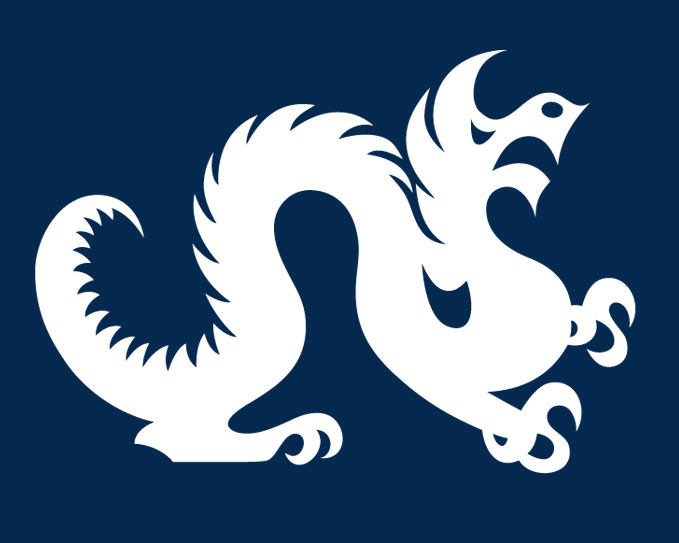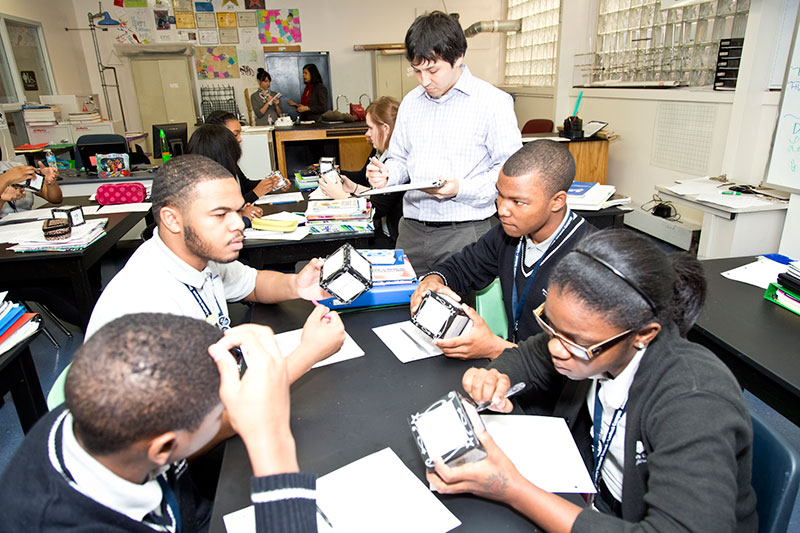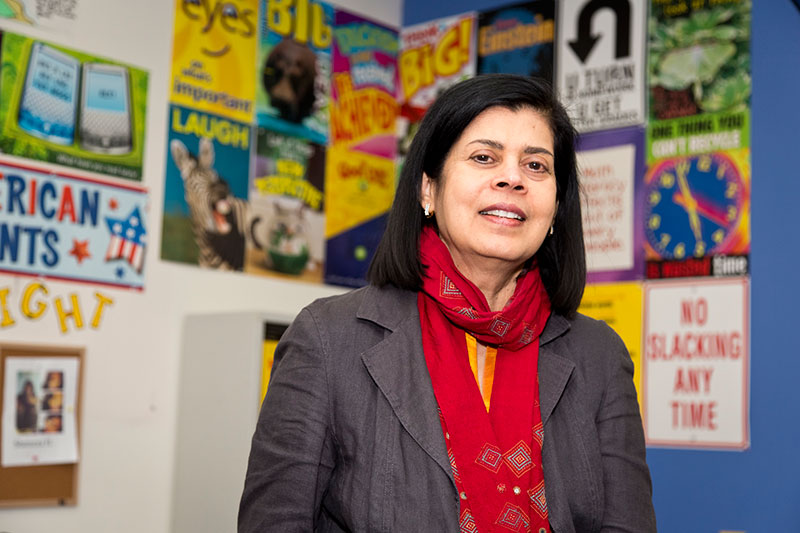“I could sit in a classroom, always,” says Sheila Vaidya from the lobby of Mastery Charter School’s Lenfest Campus. She’s interrupted by the ring of the school bell, and after a rumble from within the classrooms, students flood the hallway, backpacks slung off of shoulders and white headphones dangling around necks.
“They can be a little loud, but that’s kids,” Vaidya says with a smile. “These students are good kids, and they’re good learners.”
But Vaidya, a Drexel assistant professor of education, says eager students are only one part of the equation when it comes to creating and sustaining successful schools. The other part, of course, comes from educators themselves.
After years of working as a school psychologist in the School District of Philadelphia, Vaidya says she’s noticed that second part of the equation simply isn’t there, because if there’s one thing the city’s school system lacks, it’s effective, inspiring teachers.
“I was really surprised to visit some of the schools in Philadelphia,” says Vaidya. “Kids were so disengaged. They were making fun of the teachers, making fun of math and the rest of their subjects. It wasn’t good.”
The disconnect she witnessed in school’s throughout the city was enough to propel her into action. Seeking to make a difference in a system that badly need change, Vaidya began to write proposals for grants that could enhance the teachers’ experience, with the hope that the benefits would trickle down to the students, the school district and, ultimately, the region.
So far, Vaidya’s efforts have been wonderfully successful. Since 2007, she’s received four grants for teacher enhancement programs, and at Mastery, the students and teachers have already felt the reverberations of her most recent National Science Foundation-funded venture. The venture, called the Master Teacher program, aims to help teachers become masterful at their craft, inspire their students and set the foundation for lifelong learning.
It’s an effort that could pay dividends for years to come.
“When you think of people who have grown up, and you think of how they’ve succeeded, there’s always the story of a teacher there,” Vaidya says.
Defining ‘Mastery’
The Master Teacher initiative is rooted within the Noyce Program—a scholarship opportunity for students of education to train and eventually become Science, Technology, Engineering and Mathematics (STEM) teachers in high-need schools. Vaidya is the director of the Noyce Program and principal investigator for the Master Teacher program, which is supported by a supplemental grant to further train teachers—and, hopefully, develop true “master teachers”—already teaching in Philadelphia schools.
It’s a huge challenge, and one that starts with the very basics: Identifying what a master teacher should be, and how they can be cultivated.
“No one has one agreed-upon definition of a ‘master teacher,’” Vaidya explains. “That’s why the NSF tasked us with developing master teachers: because their idea was that if we have a model for developing them, we could replicate that all over the country.
“We’re looking at this as a career trajectory. When you look at a teacher’s path, you have pre-service teachers, who are students, then in-service teachers, who are actively teaching, and then from there, where do the good teachers grow to?”
“We think that good teachers can become what we call ‘master teachers,’ and that eventually they should be recognized for that in the system,” Vaidya adds.
But what sets an educator apart as a master teacher? Or even just a potential master teacher? Vaidya and her colleagues are still trying to define the fine print, but there’s one qualification that is already agreed upon.
“It all comes down to student achievement,” Vaidya says. “If students don’t show learning improvement, if they’re disengaged, then no one wants to be involved in this business. And that is the business that we’re in—all teachers should simply want students to be able to excel.”
Beyond the Basics
In a Mastery classroom, teacher Joji Thompson preps for his third period, 11th grade physics class. Instead of doling out blue books to each student, he’s handing out handmade cubes, each side containing a series of clues. As the students file in, they’re instructed to work together to discern patterns among the cubes and ultimately solve the day’s puzzle.
“In most science labs, we tell students what to do—measure the ramp, the speed,” Thompson says. “It’s not science—that’s me telling students what to do, and them obeying. What I want to get across to these students is that there’s more to science. Scientists don’t always have the right information, they don’t automatically know the patterns, or have the best equipment.
So you have to experiment and debate—and, as students, I need them to understand that framework for scientific discourse.”
Thompson is one of three master teachers-in-training working with Vaidya in the Master Teacher program. The cube logic lesson he’s using is something he’s picked up as part of his master teacher training—a professional development opportunity at a NASA conference in San Luis Obispo, Calif.
“That is part of the beauty of the Master Teacher program,” Thompson says. “I’m offered support, feedback and professional development to get that excellence out of my students. In turn, I provide Dr. Vaidya with data based on how my students are improving.”
Thompson says that as part of the program, he sets personal goals at the beginning of each school year. Every six weeks, his students are tested, and the results are compared to the scores of the other 600 students at Mastery. Each month, he submits his data to Vaidya, with the hopes of seeing improvements in each student’s scoring.
“Joji was masterful before he even entered the program,” Vaidya says with a laugh. “He sees the capacity of the students and then takes it to the next level.”
Thompson’s knack for teaching was something Vaidya noticed from afar; she jumped at the chance to harness it. As an undergraduate engineering student at Drexel, Thompson began tutoring students in Japanese and mathematics at the Drexel Learning Center, and later the Drexel Dragon Program—summer workshops for students who were accepted to Drexel but whose grades were on the lower end of the spectrum.
“Students were really struggling with completing the square, in particular, so I made a DVD that walked them through step by step using graphics,” Thompson says.
“That DVD caught the eye of some people in the education department, and I was asked by Dr. Vaidya to come in for a meeting. She asked me to try out education to see if I liked it or not—and I did—so they offered to help fund my education degree through the Noyce Program.”
After graduating from Drexel, Thompson moved to Japan for a year, then returned to Philadelphia to teach.
“I landed a job at Mastery,” Thompson says. “Our students are chosen by a lottery system. We don’t pick ‘the best’ kids. We take kids from all over the city whose schools say they are ‘failing,’ four or five grade levels behind.”
To qualify for the Master Teacher program, teachers must have a master’s degree in education. More importantly, they must be highly motivated, innovative, and continually striving for student achievement.
Thompson fit the bill without question, Vaidya says.
“Joji is an example of the fact that when there is a certain amount of support—and he’s getting as much as we can give—teachers and students can excel,” Vaidya says. “Some teachers in schools get no support. When teachers put in many hours behind the scenes, when they care about the achievement of their students, and when they have the resources to do so, it shows in the students. We’ve seen that here at Mastery and in Joji’s classroom, and we have the data to prove it.”
Vaidya says she collects testing data, grades, PSSA scores, evaluations and any other data that might be available from within the classrooms. But not every school is as vigilant in collecting data as Mastery—and Vaidya says the task of quantifying the value of a good teacher is one of the biggest challenges the program faces.
The Learning Cycle
As Thompson commands his class, Vaidya observes him—and his students, too. She’s collecting information that can’t exactly be tallied in an Excel spreadsheet. One student calls Thompson by first name, and he responds to her warmly. Another has a question about the semantics of a pop quiz; she raises her hand confidently, without hesitation.
“The students really respect Joji,” Vaidya says. “They trust him. That’s something you can’t teach or train.”
But Vaidya says enthusiasm is contagious—and that’s something she’s hoping can overpower the lack of data when developing a master teacher model.
“Having master teachers also comes down to increasing the teaching capacity in schools, so that there will be a corps of teachers in every school,” Vaidya says. “We want to have more Joji’s, who can inspire other teachers to learn new things. We’ve seen that happen in other schools. When teachers are using certain technologies or certain methods of working with their students, other teachers replicate that. Schools will develop and enhance themselves when there’s a teacher-learning community. There’s not much of that community in the field yet, especially in high-need schools.”
To help foster a community of effective teaching within schools, master teacher candidates are required to keep a portfolio of their work—innovative teaching techniques, professional development lessons, advice from colleagues they’ve found useful on their quest to become masterful.
“To become ‘masterful,’ it’s a very gradual learning process,” Vaidya says. “There’s no real finish line in the process. When teachers go through the program, we can say they are master teachers, but we will never say, ‘That’s the end for you.’”
Going forward, Vaidya says she hopes to establish levels of master teachers, emphasizing the importance of lifelong learning.
“We want to eventually categorize certain teachers as master teachers, partly to recognize and reward those who are putting in extra effort in teaching, and partly so they can become a role model for others. But becoming a master teacher is a lot of hard work,” Vaidya says. “There are some people who may want the recognition—to become a master teacher—but who are not prepared for the hard work involved.”
The goal of the program is not to attain the master teacher title and relax, Vaidya says. It’s to achieve excellence, and then convince the teachers to work even harder.
“If people don’t like to be studying and learning new things all the time, they shouldn’t go into teaching,” Vaidya says. “In physics, for example, there are labs all over the country who are doing physics research. That’s why professional development is so important in education, but it’s rarely stressed. Not only does Joji have to know that, but he has to be able to understand what they’re doing so he can teach his students to the best of his ability.”
And ultimately, that’s what’s at the core of the program: improving teachers who, in turn, will improve student achievement.
“When you think of your life’s trajectory, if you’re not highly educated, what options do you have?” Vaidya says. “There are a few people who can be Bill Gates. It is not impossible to be successful without an education, but you have to have an innate talent, and often, it depends on your life’s circumstances. Education sets an even playing field, and every student deserves a teacher that will open their life to opportunity.”




